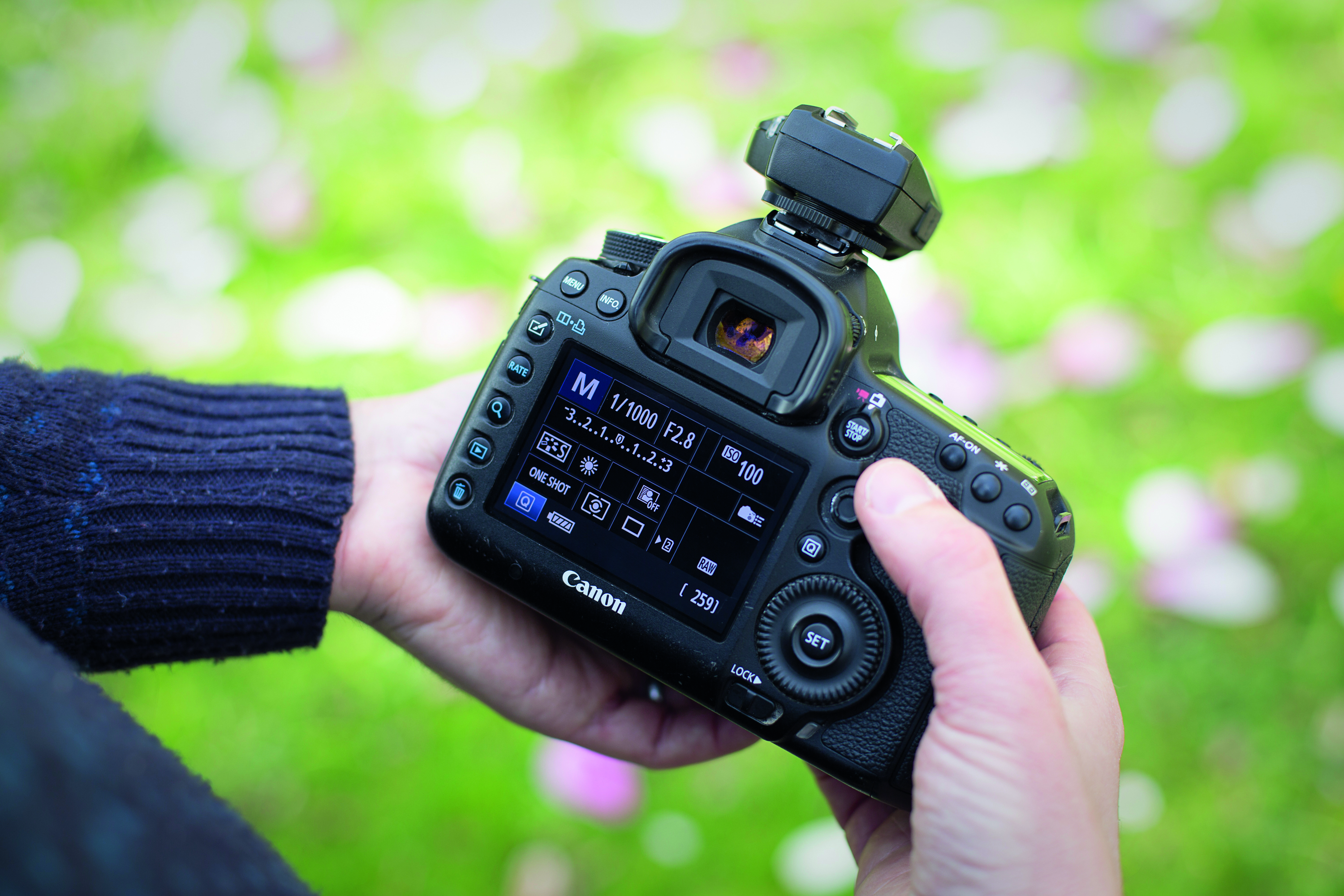Learn to capture action portraits without a hint of motion blur
Using a flashgun with HSS mode for better fill-flash portraits in daylight

Master your flash’s High Speed Sync mode for better portraits outside
Time needed: 30 minutes
Skill level: Intermediate
Kit needed: Flashgun with HSS mode, Wireless trigger and lighting stand (optional)
It’s great to use a little fill-flash when taking portraits in daylight to lighten up people’s faces and reduce harsh shadows. However, DSLRs have a maximum flash sync speed determined by the amount of time it takes for the shutter curtains to physically move across the sensor – usually 1/200 or 1/250 sec, depending on your EOS DSLR. This means that, in bright conditions, you can’t shoot with flash at wide apertures at these sync speeds (eg f/2.8 at 1/200 sec) without ending up with overexposed images, and if you set a faster shutter speed, you’ll end up with a dark band across the frame as the moving shutter is captured in the image. An alternative option is to set a narrower aperture, but while the face will be brightly lit with the flash, the background behind the subject will be distractingly sharp.
• Get more photoshoot ideas
What you need is a flashgun with a High Speed Sync (HSS) mode (all eight flashguns in last issue’s Super Test have this mode). HSS fires a pulse of low-power flashes for the duration of the exposure, rather than a single high-power burst, enabling you to set a much faster shutter speed than normal. This means you can open your aperture to blur your background for more dramatic portraits, because you can choose a higher shutter speed in daylight – such as f/2.8 at 1/1000 sec.
Another bonus of using HSS and faster shutter speeds is it can capture action portraits without a hint of motion blur in subjects.
STEP BY STEP: HOW TO SPEED UP YOUR FLASH
Set up your DSLR and flashgun to High Speed Sync mode for improved results

01 DSLR & flash Manual modes
Set Manual exposure mode, in bright daylight we picked 1/1000 sec, f/2.8, ISO100. Set your flashgun to Manual too, and enable HSS mode – this varies between flashguns.

02 What flash power?
HSS mode dramatically reduces flash power as it fires a series of pulses of light. We started at 1/4 power with the flash on a stand two metres from our subject for a good exposure in bright sunshine. Avoid using diffusers as this reduces flash power further.

03 Making fine adjustments
If light levels drop, such as the sun dipping behind clouds, drop your shutter speed to around 1/500 sec for your background exposure. If your subject is too bright, decrease flash power (or move the flash a little further back). If they’re too dark, increase flash power.

04 High-spec remote controls
You’ll need specialist triggers if you want to fire your flashgun off-camera for more creative lighting. We used PocketWizards as they work with HSS, using a Mini TT1 transmitter on our DSLR’s hotshoe, with the flashgun on a Flex TT5 transceiver on a stand.

LIGHTMETER FOR FLASH
For vertical portraits, if you’re firing a flash off-camera, position your flash on its side to light the entire face and body
Having trouble setting your HSS flash power for a good exposure? The clever Sekonic SpeedMaster L-858D light meter can measure the HSS output for precision flash exposure control. Incorporating flash duration measurement for the first time in a multifunction light meter, the new L-858D provides the flash data to help you calculate proper ambient-flash exposures for better-lit shots.

No flash 1/200 sec, f/9

E-TTL flash 1/200 sec, f/9

HHS flash 1/1000 sec, f/2.8
Get the Digital Camera World Newsletter
The best camera deals, reviews, product advice, and unmissable photography news, direct to your inbox!
The editor of PhotoPlus: The Canon Magazine, Peter 14 years of experience as both a journalist and professional photographer. He is a hands-on photographer with a passion and expertise for sharing his practical shooting skills. Equally adept at turning his hand to portraits, landscape, sports and wildlife, he has a fantastic knowledge of camera technique and principles. As you'd expect of the editor of a Canon publication, Peter is a devout Canon user and can often be found reeling off shots with his EOS 5D Mark IV DSLR.


